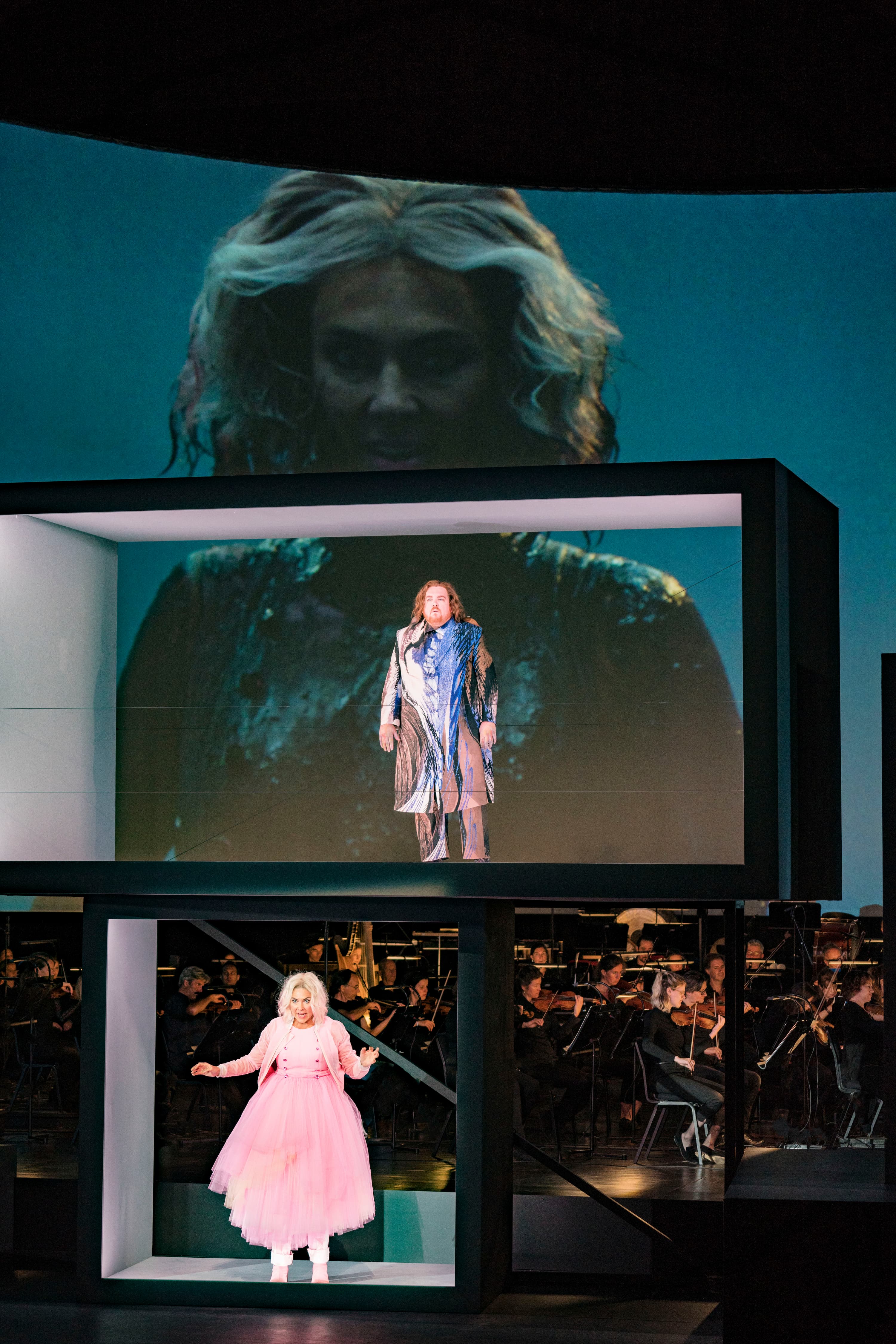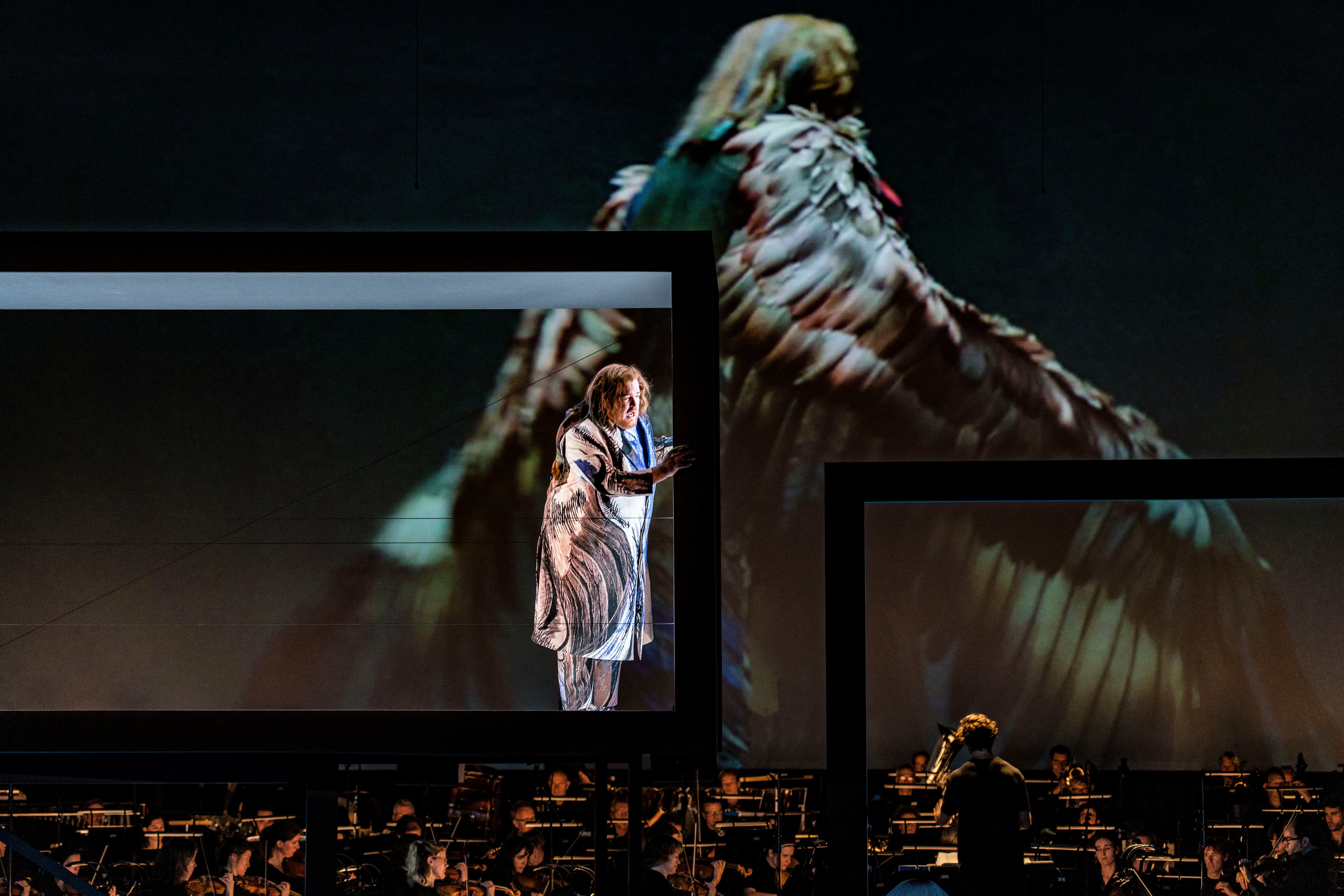
Nanouk Leopold: A portrait
Text: Margriet Prinssen
Dutch film and theatre director Nanouk Leopold is a magician with space, emptiness, light and shadow. Her visual language is tight, thoughtful and compelling. Light directs the viewer’s gaze and emphasises the emotions of her characters. Loneliness, the feeling of being ‘different’, the vulnerability of a human being in a soulless world in which only the outside counts; these are themes that play an important role in all her work, and are also present in Der Zwerg.
Leopold is one of the most successful Dutch directors and screenwriters. She is praised for her consistent visual language, her restrained expression and the way in which time, space and design determine the story. Starting from a background in visual art, Leopold gradually developed her talent in the direction of film and theatre. With Der Zwerg she makes her debut in the opera world. “Nanou is a artist pur sang,” says Maria Kraakman, the actress with whom she has worked frequently. “She can tell a story in many different ways, whether it is through visual art, film or theatre. She has a very unique message to convey story to tell, in which I, as an actress, have every confidence.”
The film director
Her break through as a film maker was marked by her debut Îles Flottantes (2000) and especially with Guernsey (2005), for which she was awarded with two Golden Calves and was selected for the Cannes Film festival. She also won several awards at international film festivals with Wolfsbergen (2007), Brownian Movement (2010) and Boven is het stil (2013). Leopolds biggest audience success was Boven is het stil, based on Gerbrand Bakker’s novel of the same name about a lonely farmer – actor Jeroen Willem’s last film role – who takes care of his dying father on a lonely farm and is secretly in love with the milkman. Cobain, her most recent feature film, had its world premiere at the Berlinale in 2018.
Her films have their own compelling imagery, dialogues are sparse and silences meaningful. A plot is of minor importance. They are often about characters who get stuck in modern life, about feelings of alienation, of people looking at themselves from a distance, of searching for identity and meaning. Leopold does not employ a classical cinematic realism. At first sight, her work seems distant; the emotions are often subcutaneous and are not shown at all or only through the sparse use of small, significant details, sometimes only visible in subtle shifts of the light or colours. She feels akin to film makers such as Pier Paolo Pasolini or Michelangelo Antonioni, about whom she said in an interview: "His very distinct visual style and precision touch me deeply. He has an eye for details and coincidences that don't seem to matter, but still represent something bigger. I especially identify with the way he works with architecture and uses spaces to express how people are feeling."


The theatre director
A few years ago, Ivo van Hove invited her to make a performance at Internationaal Theater Amsterdam (ITA). In an interview in the Volkskrant (2017), Leopold says that Van Hove had studied her films very closely: "He made me aware of the theatrical interventions in my work. In Brownian Movement, for instance, there is a room that is character itself. Ivo called that a theatrical invention: it has to do with fantasy, making something transcend reality, and with abstraction. I really like abstract, but in films you are very much bound by realism. Whereas in photography and film the camera provides the frame, the perspective from which the viewer's gaze is directed, in her theatre work the light fulfils that function. "My fascination is emotional, spirited space: spaces that tell something before the story or the actors do. We create such spaces here with light."
We, that is, Leopold and her husband, visual artist Daan Emmen, together with whom she has also been creating video installations under the name Leopold Emmen since 2008. Their first collaboration was the six-hour film Close-Up for the IFFR's Size Matters programme. The possibilities of architectural space play a major role in all their work. They are also jointly responsible for the scenography and video design of Der Zwerg.
For her debut as a theatre director at Internationaal Theater Amsterdam, Leopold chose a play by Ingmar Bergman: Uit het leven van marionetten. At first glance not an obvious choice: whereas in Bergman's play talking is used to cover up the emptiness, Leopold's work is dominated by silence. But in the work of both makers, the main focus is on characters who are locked away deep inside themselves. "In the silence you hear the truth", says the main character (Eelco Smits) to his wife Katarina (Janni Goslinga). While they are talking, Leopold displays enormously enlarged close-ups of their faces on the screen. Not live, but images that were recorded earlier, thereby increasing the distance. With minimal means she creates a maximum experience.
As in Uit het leven van marionetten, video plays an important part in Harold Pinter's classic De thuiskomst, her second production at Internationaal Theater Amsterdam. She fully respects the original text and mainly makes her own choices in terms of imagery. The combination of the spatial effect of theatre and the visual impact of film particularly fascinates her. In contrast to the probing realism of her films, in her theatre productions she searches for the power of abstraction and the tension between the living actors and the design - in film, video or other means - on stage. In the middle of the stage in De thuiskomst, for example, she places a large object in the space, something abstract. "That is what makes theatre so nice and special: you can create all kinds of worlds. I want to get people thinking, I want to make them curious."



